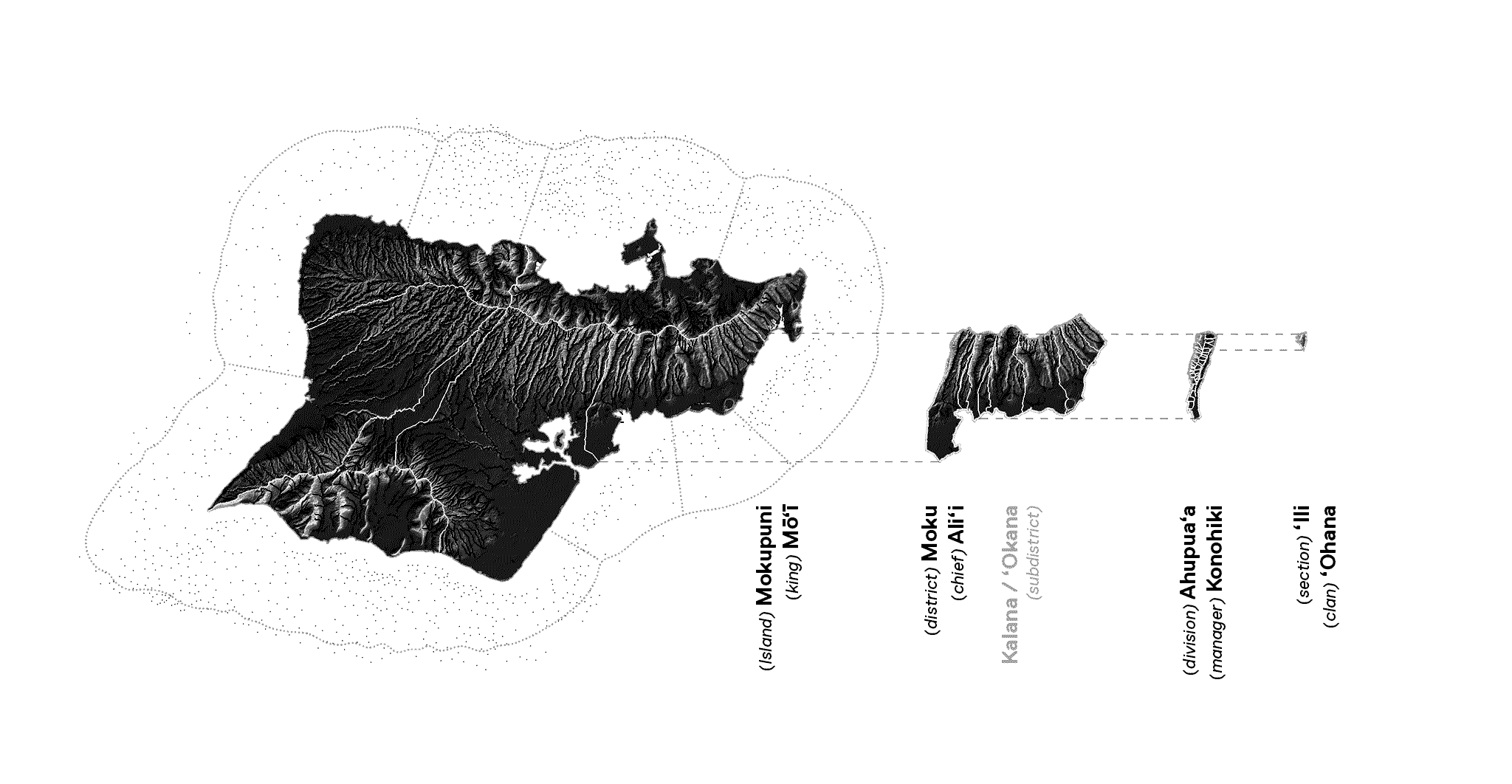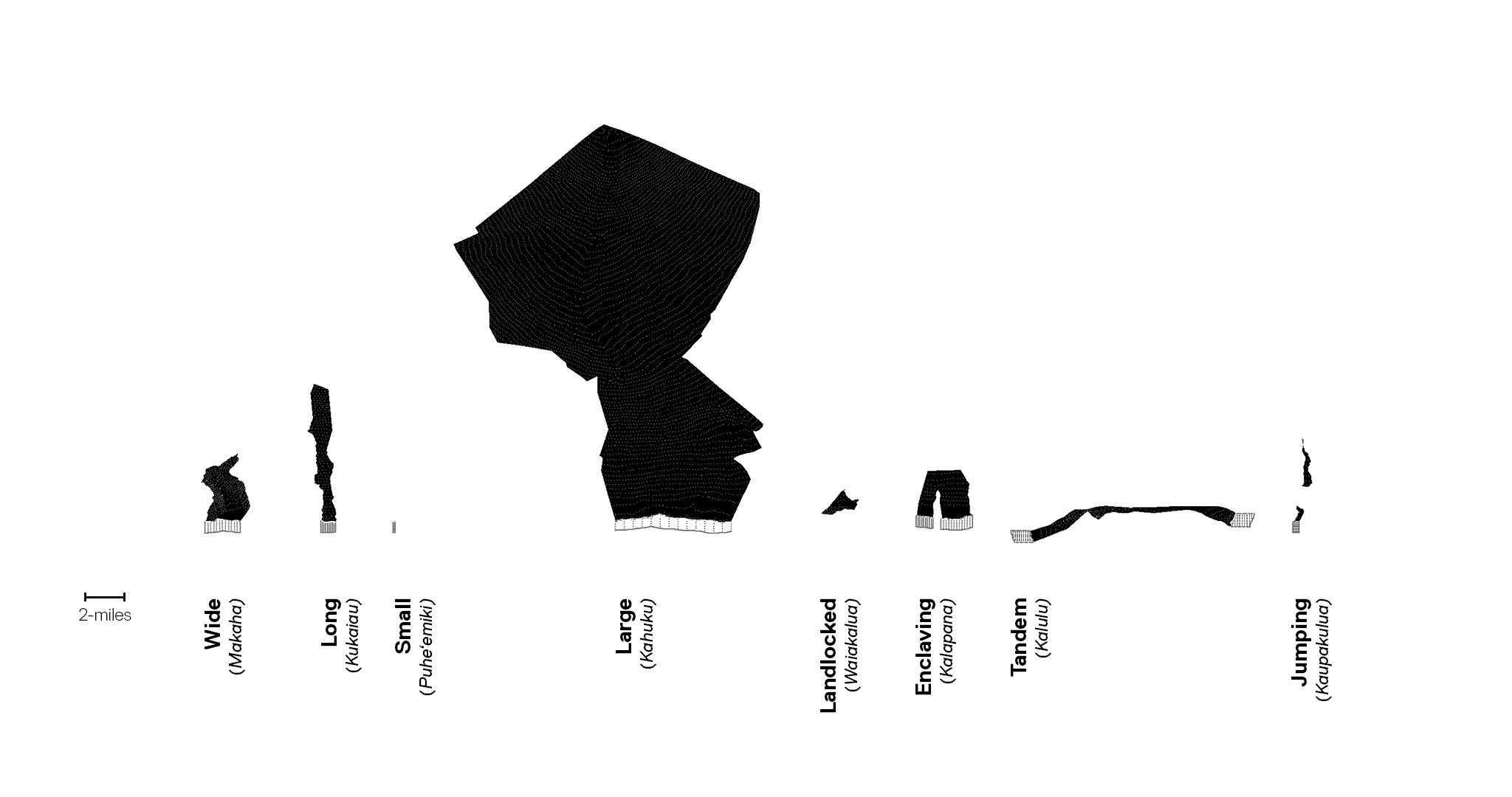ISLAND VISION
All economy requires water. Freshwater accumulates on islands by forest types established with careful variations in elevation, solar radiation, wind, rainfall, soil, and observation. Constant observation (by both people and machines) of the data stored in the resources that together yield freshwater is necessary to maximize the effect of island economies with minimal means.
Since olden times, Hawaiians have designed and engineered the economy of islands in total ecology, or a system of other perceiving systems. This double movement, and its cycles of observation and interaction within and over the orders of each ecology (from saline to freshness), have enabled Hawaiians to grow and raise the capacity of every island to feed enough life. 'Āina.
The capacity of every island economy is managed, measured, and recorded, in volumes of resources, like water and soil. Volumes of resources carve the continuous space of land, sea, and sky into productive technologic units of wealth and information. Moku, ahupua'a, and 'ili are among the most commonly known.
![]() Moku system of O'ahu, and its organization into moku, ahupua'a, and 'ili.
Moku system of O'ahu, and its organization into moku, ahupua'a, and 'ili.
Ahupua'a are the fundamental technic of economy in Hawai'i. The average ahupua'a fits an area of around 9 square miles, and will take on as many formations as its landscape provides. Some ahupua'a are wide, while others are long. They can be small, or large, and even landlocked, enclaving (or enclaved), tandem, or jumping. While the architecture of each typology of ahupua'a varies according to constraints that may be hydrological (watershd), geological (soil order), or genealogical (site), all ahupua'a are significant for the scale in which they are bound to constantly observe the resources flowing within and around each locale.
![]() An array of eight types of ahupua'a, described architecturally.
An array of eight types of ahupua'a, described architecturally.
The economy of an ahupua'a, and its corresponding 'ili and or moku (to name only a few) is a complete science of the environment. Its method of classification corresponds with the perceived movements of flora, fauna, flows, and phenomena that stick to, leap away from, or swallow each overarching ocean-basin watershed. Watersheds (and there are many) propagate networks of dwellings, fields, pondfields, and fishponds. The physical integration of home, food, and ecosystem produces a human technic founded in a reverence for the resources that permeate through every level of human life.
![]() Three architectural prototypes of ahupua'a cultivation.
Three architectural prototypes of ahupua'a cultivation.
![]() A sectional approach to ahupua'a considers elevation and geological age.
A sectional approach to ahupua'a considers elevation and geological age.
 Moku system of O'ahu, and its organization into moku, ahupua'a, and 'ili.
Moku system of O'ahu, and its organization into moku, ahupua'a, and 'ili. An array of eight types of ahupua'a, described architecturally.
An array of eight types of ahupua'a, described architecturally. Three architectural prototypes of ahupua'a cultivation.
Three architectural prototypes of ahupua'a cultivation. A sectional approach to ahupua'a considers elevation and geological age.
A sectional approach to ahupua'a considers elevation and geological age.